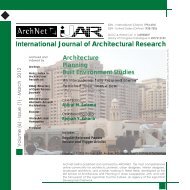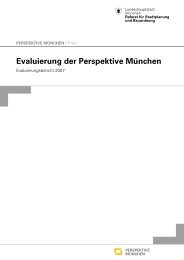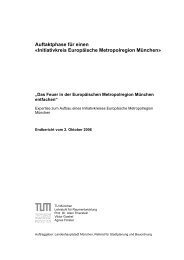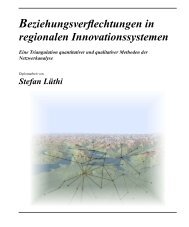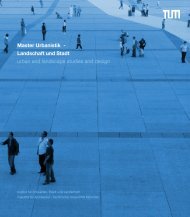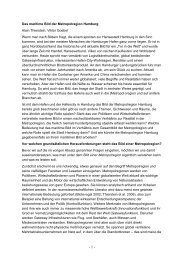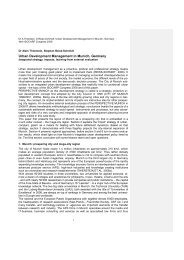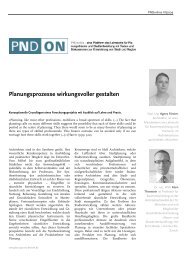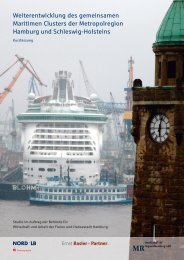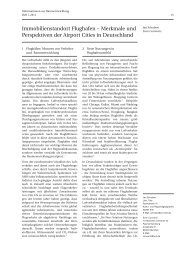Airports in Cities and Regions - KIT Scientific Publishing
Airports in Cities and Regions - KIT Scientific Publishing
Airports in Cities and Regions - KIT Scientific Publishing
You also want an ePaper? Increase the reach of your titles
YUMPU automatically turns print PDFs into web optimized ePapers that Google loves.
24<br />
Stephen J. Appold <strong>and</strong> John D. Kasarda<br />
Specialization requires frequent contact across long distances, whether eng<strong>in</strong>eers are<br />
be<strong>in</strong>g ferried aboard the “nerd birds” that connect distant high technology clusters or<br />
<strong>in</strong>vestment bankers are speed<strong>in</strong>g between appo<strong>in</strong>tments <strong>in</strong> far-flung f<strong>in</strong>ancial<br />
centres or IT consultants are commut<strong>in</strong>g on early Monday <strong>and</strong> late Thursday flights.<br />
In the process, cities shift from be<strong>in</strong>g central places to be<strong>in</strong>g open spaces. The<br />
restructured economy has undoubtedly benefited the largest cities but selected<br />
second-tier cities <strong>and</strong> high-amenity areas have benefitted more.<br />
4 Regionalization <strong>and</strong> the rise of airport cities<br />
Airport cities are sometimes seen as a product of globalization. Commercial aviation<br />
certa<strong>in</strong>ly has been a tremendous aid to the globalization process. Conversely,<br />
globalization may be responsible for the rise of airport cities <strong>in</strong> greenfield<br />
development. However, it is not clear that immediate airport proximity is a salient<br />
factor <strong>in</strong> firm location decisions <strong>in</strong> mature cities when <strong>in</strong>ter-cont<strong>in</strong>ental trips are<br />
common. Japanese firms <strong>and</strong> seconded Japanese nationals <strong>in</strong> New York,<br />
concentrat<strong>in</strong>g <strong>in</strong> the area of the metropolitan region farthest from JFK Airport, have<br />
generally let residential amenities outweigh airport access <strong>in</strong> mak<strong>in</strong>g location<br />
decisions.<br />
Direct access may be a salient location factor when an airport area location has a<br />
significant impact on the length of a trip by elim<strong>in</strong>at<strong>in</strong>g or reduc<strong>in</strong>g the need for<br />
overnight stays. Consequently, airport cities may offer their most significant<br />
competitive advantages <strong>in</strong> Europe <strong>and</strong> North America when bus<strong>in</strong>ess flights average<br />
an hour or two <strong>in</strong> length. Simulations of market reachability on s<strong>in</strong>gle-day trips,<br />
shown <strong>in</strong> Figure 3, suggest that airport cities can amplify the impact of the benefit of<br />
commercial aviation <strong>in</strong> such cases. Naturally, the costs of reach<strong>in</strong>g customers<br />
<strong>in</strong>crease with distance, so only some of the non-local bus<strong>in</strong>ess opportunities are<br />
viable but, at moderate flight distances, a location near an airport can significantly<br />
<strong>in</strong>crease a firm’s market size



